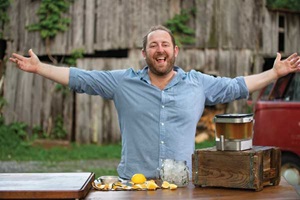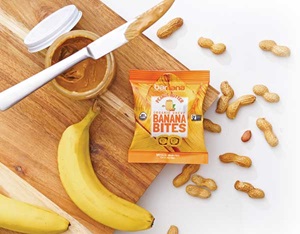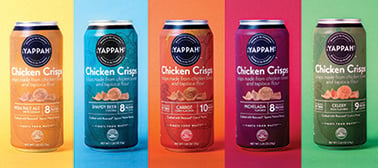
Closing the Loop on Food Waste
Pioneering start-ups as well as established food companies are applying circular economy principles as they strive to operate more sustainably, responsibly, and creatively.
Article Content
Up to 40% of food that is grown or processed globally ends up being wasted. And as the global food system begins to rally around advancing a “circular economy” to address the problem, that statistic drops from the lips of nearly everybody who’s motivated to do something about it.
If true, that estimate—first hatched by the National Resources Defense Council (NRDC) environmental group in 2012—is a mammoth indictment of many things: food producers and manufacturers, policymakers, educators, and consumers. Even if the number is apocryphal or just inflated (see sidebar on Quantifying the Scope of Food Waste), food waste of anywhere near that magnitude comprises both a call to action and an opportunity for food and beverage producers worldwide. And that is why many farmers, food processors, packagers, distributors, and retailers are embracing the cause of cutting food waste with long overdue determination.
“The whole notion of a regenerative, circular food economy is capturing nutrient value and closing the nutrient loop and thinking about opportunities where waste is occurring throughout the supply chain, where we can meet social and environmental objectives that also have huge market potential,” explains Renske Lynde, CEO and co-founder of Food System 6 (FS6), an anti-waste incubator based in Berkeley, Calif.
So now there’s “upcycling” as well as recycling, discussion of “food insecurity” in addition to sustainability, coddling of “imperfect” produce, and redemption of suboptimized processing. Anti-food waste has become a business model, a marketing meme, a social cause, and an opportunity and a challenge that now is drawing investments from big consumer packaged goods (CPG) companies, retailers, and start-ups alike as well as continuing prods by activists.
Advocates quite easily have been able to tie the issue of food waste to that of hunger, some postulating that about one-eighth of Americans still “go to bed hungry” even amid the current economic boom and historic low levels of joblessness. Yet cutting food waste is a somewhat separate challenge from reducing plastic cups, straws, and packaging: Clearly they are interrelated, but cutting food waste is an end to itself regardless of packaging issues.
“In many ways, food waste is inefficiency masquerading as resources,” says Elizabeth Balkan, food waste director for NRDC. “Pinpointing the problem of food waste highlighted the fact that even sophisticated companies have inefficiencies in their supply chains and opportunities to improve entire operations that not only shrink the amount of food waste being generated but also save businesses money.”
 So companies are now joining nongovernmental organizations such as NRDC, and activists such as the television star Joel Gamoran, national chef of Sur La Table, in promising to make the planet better by not wasting materials—and by turning waste materials into ingredients.
So companies are now joining nongovernmental organizations such as NRDC, and activists such as the television star Joel Gamoran, national chef of Sur La Table, in promising to make the planet better by not wasting materials—and by turning waste materials into ingredients.
In fact, about two dozen CPGs and food retailers are working with the U.S. Environmental Protection Agency as U.S. Food and Waste 2030 Champions, setting a target to cut food waste in half by 2030. They include major producers Campbell Soup, Conagra, General Mills, Kellogg, PepsiCo, and Unilever and many prominent food retailers, such as Walmart, Kroger, Wegman’s, and Ahold Delhaize USA.
Another initiative has partnered NRDC with the Ad Council to create a public service announcement campaign inspiring Americans to “Save the Food” by showcasing the life cycle of food and the loss of resources when it goes unconsumed.
Morton Salt came up with its own #EraseFoodWaste meme in 2017 and produced a series of videos as well as posters that were literally made, 100%, from food waste.
 “We focused on stepping up and making a difference in the world,” says Denise Lauer, chief marketing officer for the Chicago-based company. “We wanted to be a brand that starts the conversation around food waste in a different and meaningful way, because the very nature of salt is to preserve food.”
“We focused on stepping up and making a difference in the world,” says Denise Lauer, chief marketing officer for the Chicago-based company. “We wanted to be a brand that starts the conversation around food waste in a different and meaningful way, because the very nature of salt is to preserve food.”
Many of the initial efforts by these companies and others simply have taken advantage of low-hanging ugly fruit, if you will. Most major CPGs have yet to significantly step up on food waste. “They’re all looking at it,” Balkan says, “but we have yet to see a really public commitment being made to [reuse] a certain percentage of reclaimed ingredients.”
CPGs ID Opportunities
Yet now, some CPG producers are moving into what Balkan calls “second-order” opportunities “by taking something that would have been wasted by another process and putting it back into manufacturing.”
Tyson Foods is a pioneer in this regard. It has introduced ¡Yappah!, a new brand of “chicken crisps” snacks that are made from upcycled trimmings of chicken breasts, tapioca flour, vegetable purees “rescued” from juicing, and malted barley that is a by-product of beer brewing.
The first product out of the chute for Tyson’s intrapreneurial Innovation Lab (see sidebar on From Poultry Scraps to Snacks), ¡Yappah!, sprinted from concept to finished product on the shelf in only six months.
“It’s very important because we believe that, hopefully through this launch, we can help create awareness with action to fight food waste,” says Rizal Hamdallah, head of Innovation Lab. “It’s unbelievable to see how many companies talk about it but don’t act on it. What’s important for us as a leader is to show that we can start doing something about it.”
Hamdallah notes statistics such as other NRDC figures which show that Americans throw out an average of $218 billion in food each year, which amounts to about $2,200 per household. “As a company, we’d like to do something about it,” he says. “That’s why we are driving innovation and new growth and products to market within six months, to tackle this space.”
Entrepreneurs at the Forefront
But as in so many other areas that are revolutionizing the food business, entrepreneurs comprise most of the vanguard in cutting food waste.
 Barnana is one of the most prominent such start-ups. Co-founder Caue Suplicy and his partners have built a $15 million-plus start-up in just six years, selling banana “bites” in several varieties. Barnana Bites are partially dehydrated bananas based on a family recipe that leaves just the right amount of moisture inside—about 20%—to create a healthy, satisfying snack. “They’re very different” from freeze-dried bananas, the Barnana CEO says. “We remove 80% of the water, while freeze-drying removes it all.”
Barnana is one of the most prominent such start-ups. Co-founder Caue Suplicy and his partners have built a $15 million-plus start-up in just six years, selling banana “bites” in several varieties. Barnana Bites are partially dehydrated bananas based on a family recipe that leaves just the right amount of moisture inside—about 20%—to create a healthy, satisfying snack. “They’re very different” from freeze-dried bananas, the Barnana CEO says. “We remove 80% of the water, while freeze-drying removes it all.”
Sourcing was important for Barnana because the founders wanted the company to rise on a sustainability ethos from the start. It was all the better that this value-based priority jibed well with the requirements for the product. Because Barnana’s ideal raw material was bananas that were a bit ripe, there was a vast supply of the fruit in Central and South America that would be available in the form of waste bananas.
“When I went to farms, I ended up learning that a big percentage of the production of bananas doesn’t qualify as exports,” Suplicy says. “Usually they are too big or too small or aren’t green enough. When they start to ripen, they’re thrown away. We figured we could buy those bananas that otherwise would be wasted and also provide a second income stream for farmers.”
Lately, Barnana has extended its product line to banana brittle, made from banana puree, and even to another fruit, making chips out of plantain, and is broadening distribution as the start-up stokes what co-founder Nik Ingersoll calls “meteoric” growth.
“We’ve upcycled more than 13 million kilos of bananas so far, and we’ve barely even scratched the surface of global banana waste,” says Ingersoll, who is also Barnana’s chief marketing officer. “About 20% of all bananas produced go to waste. It’s astronomical how many there are, and we continue to use them every day.”
Benefiting From By-Products
Recycling the waste from brewing beer has become another favorite opportunity area for entrepreneurs. A four-year-old San Francisco–based company called ReGrained, for example, made snack bars out of spent grain and other simple, organic ingredients in beer-themed flavors: Honey Almond IPA and Chocolate Coffee Stout. Then co-founders Dan Kurzrock and Jordan Schwartz reformulated the bars to use a flour made out of spent grain and planned to branch out into savory snacks such as chips.
What’s left in spent grain is all the fiber and proteins and also micronutrients that don’t make it into beer, says Kurzrock, who is ReGrained’s “chief grain officer.” “It’s not just dietary fiber, but it’s also prebiotic fiber, and the protein, of course, is plant-based protein.”
U.S. beer brewers annually use about 6 billion pounds of grain, which is soaked in water to extract the sugar and make liquid wort, a key ingredient of beer. What’s left is free for the taking.
The two recognized that they could tell a sustainability story for any product they came up with that employed brewers’ grain: rescuing the stuff for a good purpose from its alternate destiny in a landfill.
“What we’re trying to do for beer is what the users of whey did for cheese,” Kurzrock says. “We ‘upcycle’ it and find the highest use for it. So there’s a sustainability story as well as a nutrition story to be told.”
On the opposite coast, Bertha Jimenez has a slightly different take on the same idea. Rise Products, her New York City–based start-up, works with local brewers to turn barley mash into high-fiber flours and flakes that the company sells for private label purposes to chefs, bakers, and food manufacturers.
Now she’s excited about how a “big food manufacturer,” which she declined to identify, is using Rise flour as a one-third ingredient in its dough for frozen pizzas. “I thought it wouldn’t taste good, but it’s actually really tasty,” Jimenez says. “It’ll be out in another few months.”
.jpg?la=en&h=215&w=300&hash=C1EA876A9D050D0ADF52E64FB8377F87) Claire Schlemme targeted okara, the pulp left behind by processing soybeans for “milk,” as the first product of her start-up, Renewal Mill. Boston-based Schlemme already had established a juice brand when she heard the owner of a California tofu factory talk with despair about the lack of satisfactory options to handle okara.
Claire Schlemme targeted okara, the pulp left behind by processing soybeans for “milk,” as the first product of her start-up, Renewal Mill. Boston-based Schlemme already had established a juice brand when she heard the owner of a California tofu factory talk with despair about the lack of satisfactory options to handle okara.
“About one-third of the protein in soybeans is left in the okara, and lots of fiber,” Schlemme says. “That actually leaves behind a very nutritious substance. But soy milk has been considered the ingredient, and okara the waste, just because we have such an industrialized food system and we lose the ability to think holistically about these inputs.”
Her company, she says, “is a bridge builder. I figured this could be a really interesting solution to food waste and also for better affordable nutrition, and keeping ‘waste’ in our supply chain,” Schlemme says. “So I found a local tofu maker and got a bag of okara and spent about a week playing around with it.”
Schlemme knew there were culinary possibilities for okara in part because it is an ingredient in East Asian cooking. But that is okara in its unaltered form; she quickly concluded that “an important piece of upcycling by-products at scale is dehydration. Fibrous products tend to be very wet, which leads to two problems: They spoil very quickly, and they’re heavy. As soon as you need to move them, you can quickly lose cost savings of a low- or no-cost stream of nutrition.”
Creating okara flour made sense to her, especially because American consumers already had demonstrated an appetite for other non-wheat flours. Plus, okara flour has a neutral flavor and light color so it blends well into products without significantly changing their look or taste—while boosting nutrition at the same time.
Already, Renewal Mill is partnering with a small meal kit maker called Local Crate; okara is an ingredient for coating the chicken in an orange chicken and broccoli bowl the company offers. And Schlemme says she’s talking with “large CPG companies that just have a longer time frame.”
 In the produce arena, Matt Weiss started a company called Rind Snacks that dries fruit pieces with the rinds and skins still on and sells them as an antioxidant-packed snack that also helps reduce food waste. Expect to see Rind Skin-On Superfruit Snacks, now available only online, in a major U.S. retailer this year.
In the produce arena, Matt Weiss started a company called Rind Snacks that dries fruit pieces with the rinds and skins still on and sells them as an antioxidant-packed snack that also helps reduce food waste. Expect to see Rind Skin-On Superfruit Snacks, now available only online, in a major U.S. retailer this year.
Rinds, of course, pack the most nutritional punch of any component of nearly any fruit because the bright and deep colors there indicate the presence of high concentrations of vitamins, and of flavonoids and other antioxidants. They also contain a lot of dietary fiber.
The trick is getting Americans to consume something that, except for the peels of apples and the skins of grapes and berries and a few other fruits, they’ve always seen as scrap.
Weiss’s answer was to render fruit pieces with the skins and rinds still on as another form of dried fruit and to give the products on-trend taste profiles that are more piquant than most dried fruits.
“It was a big opportunity to take the taste profile of dried fruit— which has been the domain of raisins and prunes and apricots—and make it interesting and sexy and use taste profiles that are more tangy and bittersweet,” says Weiss, who’s still in the investment industry and is a part-time entrepreneur.
Circular Thinking at Kroger
At the same time, even given the trailblazing contributions of food and beverage start-ups, arguably retailers are showing more collective progress on the food waste issue than packaged goods companies.
Kroger, for example, has entered the fray in some big ways. Early this year, the Cincinnati-based chain plans to introduce an “ugly produce” brand called Pickuliar Picks. Its tagline will be “imperfect but perfectly delicious,” and it will comprise tomatoes, bell peppers, limes, yellow onions, gala apples, and other items that may be too small, too bumpy, or too freckly on the outside but are just fine on the inside.
The new brand is part of an effort Kroger launched in 2017 called “Zero Hunger/Zero Waste,” which conflated hunger elimination with food waste elimination. The platform also includes achieving Kroger’s own waste-reduction goals, which range from expanding composting behind its stores to achieving “zero food waste as a company” by 2025 and establishing a $10 million “innovation fund” within Kroger’s foundation to “address hunger, food waste, and the paradoxical relationship between the two.”
But in distribution, just as in food production, mostly it’s entrepreneurs who are pushing the envelope on the waste issue.
 Imperfect Produce is a four-year-old San Francisco–based start-up that “finds a home for ugly produce,” as content manager Reilly Brock puts it, with an e-commerce and home-delivery business model that ends up being about 30% less expensive than the prices for regular produce in stores.
Imperfect Produce is a four-year-old San Francisco–based start-up that “finds a home for ugly produce,” as content manager Reilly Brock puts it, with an e-commerce and home-delivery business model that ends up being about 30% less expensive than the prices for regular produce in stores.
The company gleans fruits and vegetables from farmers’ fields that previously would have been written off as a loss because of cosmetic imperfections or as surplus amid fluctuating commodities’ markets. Its most popular products include small avocados, which a lot of retail outlets won’t buy, “but they’re perfectly portioned for garnishment” and curved carrots (about 2% of the crop), says Brock.
“We’re not as picky as stores,” Brock continues. “We’ll buy smaller quantities. All we care about is getting people to eat it. We don’t care how it would look in a display.”
Nevertheless, among the remaining obstacles to cutting food waste is public skepticism regarding uncustomary products such as mottled fruit and chips made from poultry scraps. While American consumers are eager to back the fight against food waste, Balkan says, “There still exists a big branding or marketing challenge: When you call something ‘waste,’ it makes things seem less appealing.”
That is why, according to Lynde, there’s a “move to not talk about ‘food waste’ but about ‘wasted food.’ All the polling data we’ve seen shows a dramatic positive reaction to the notion of ‘wasted food,’” she says, “and to consumers’ ability to do something that has a positive environmental impact that they can do easily.”
And this is where influential advocates such as celebrity chefs come in. The biggest impact may already have been made by Anthony Bourdain, who in 2017 produced a widely watched documentary called Wasted: The Story of Food Waste. It was one of Bourdain’s last big projects before his suicide in June of last year.
Gamoran, the New York–based star of Scraps on the A&E network, is a happy warrior for the issue who barnstorms the country in a refurbished 1963 Volkswagen van in search of “waste” foods to rescue. He found a new use for broccoli stems (many of which get composted because consumers prefer to eat the florets) by grating them into stir-fry, and goat meat (which gets thrown into landfills because no one wants to eat it, preferring goat cheese) by making it into sausage.
“If I can somehow take spent grain from beer and grind that into flour and make the most amazing scone with it, people will want it,” he says. “If I describe it on camera as ‘nutty’ and having a ‘different flavor profile, almost like baking with beer,’ I’ve done my job.
“My responsibility as a chef is to make this movement cool and on trend.”
Dale Buss is a freelance writer based in Rochester Hills, Mich. ([email protected]).
IFTNEXT content is made possible through the generous support of Ingredion, the IFTNEXT Platinum Content Sponsor.

 Nick Mendoza’s fish jerky brand, One for Neptune, is formulated out of a species that commercial fishermen consider a “junk” fish, yellowtail rockfish.
Nick Mendoza’s fish jerky brand, One for Neptune, is formulated out of a species that commercial fishermen consider a “junk” fish, yellowtail rockfish.




